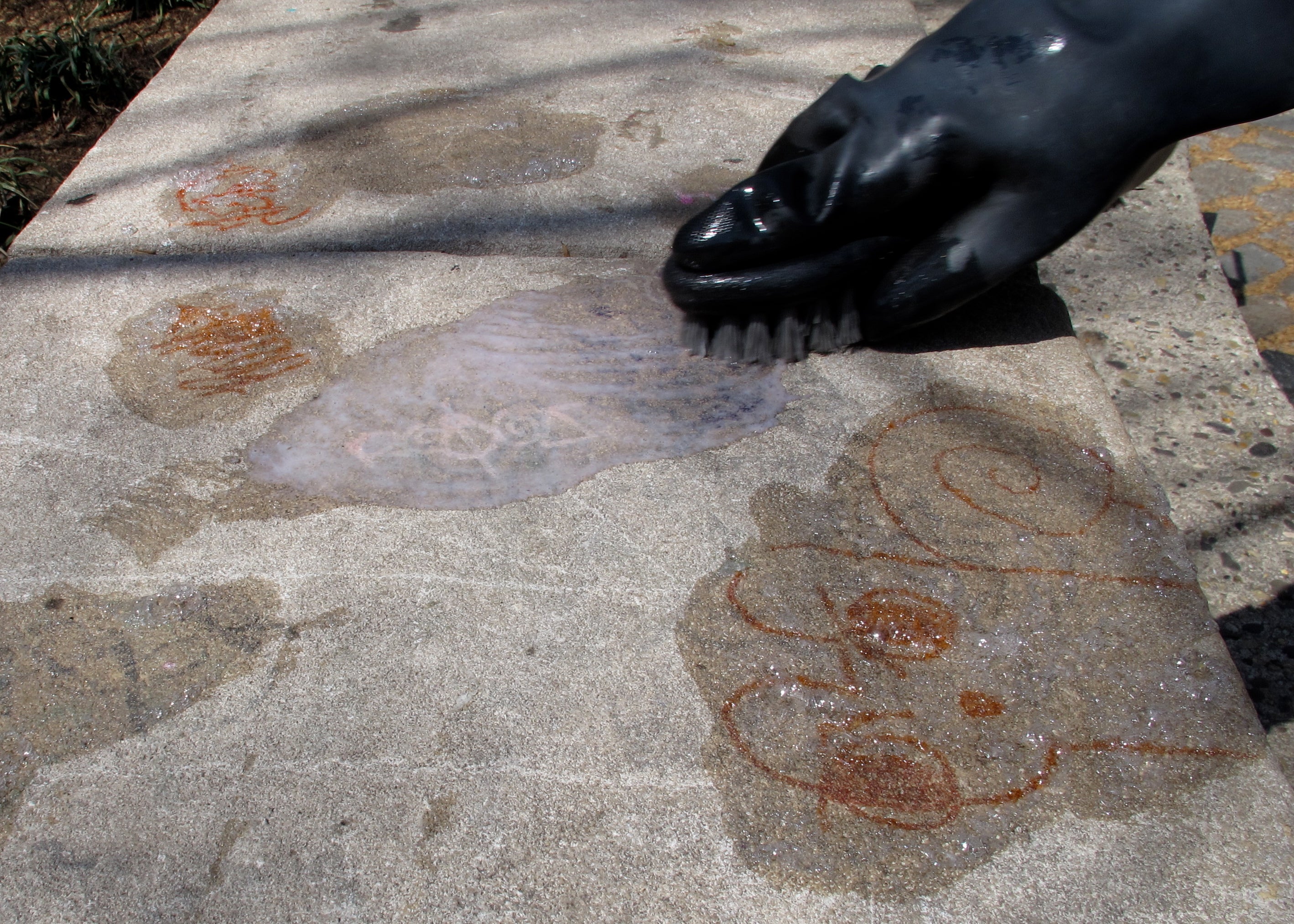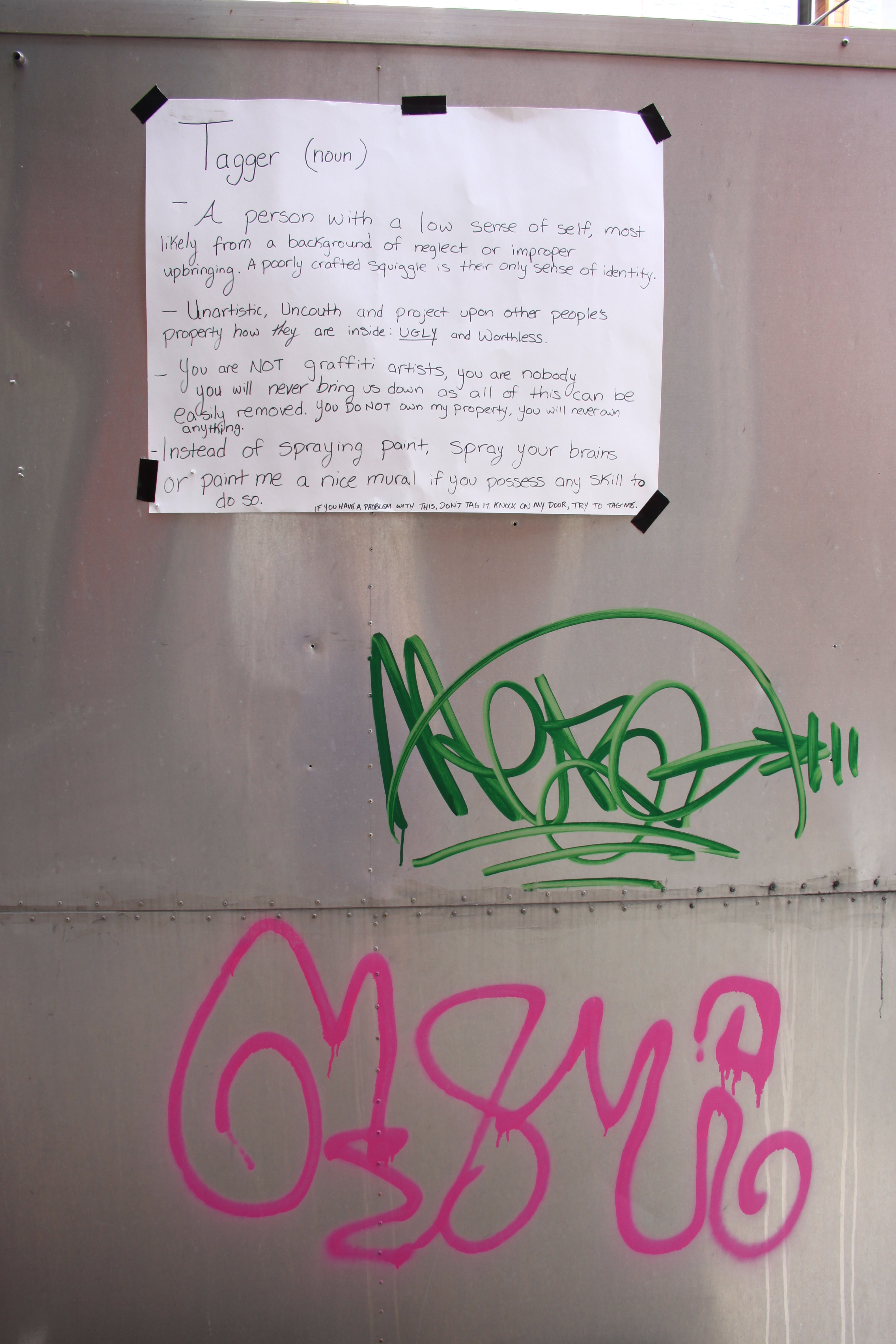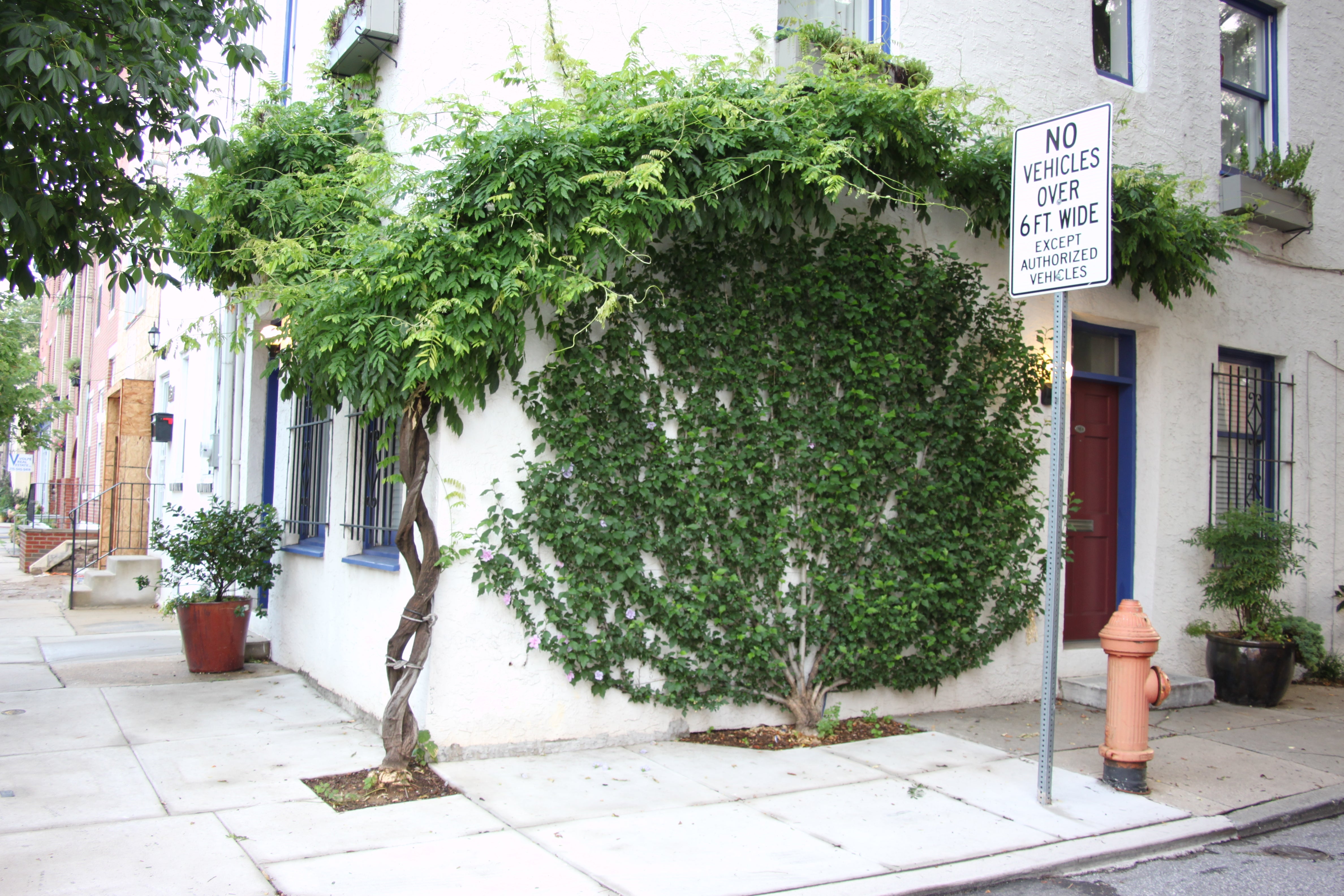Tagged: What graffiti does to cities and what you can do about it

Eyes on the Street is taking a practical look at graffiti removal this week with a two-part feature.
First up: Lauren Drapala, a conservator with the Fairmount Park Historic Preservation Trust, removes a lot of graffiti. Here she shares how the problem of urban graffiti has evolved, why it’s never going away, and shares tips for taking graffiti removal into your own hands. Tomorrow: city programs for graffiti removal and how you can help.
___________________________________________________________________________________________________________________________
Humans have always felt compelled to write/draw on the environment around them. Across cultures, geography, times of prosperity and decay, graffiti has marked the day- to-day sentiments of people throughout time. Graffiti may seem a modern inconvenience, especially a growing concern in Philadelphia, there might be some satisfaction in knowing that people have done and always will do it, and it is no less offensive or ridiculous than it was 2,000 years ago (Pompeii is just one example).
But advances in paint technology over the last century have given would-be vandals the ability to make fast, large and semi-permanent tags with anonymity and relatively little culpability. The aerosol spray can, first manufactured on a large-scale in the US during the 1940s, revolutionized the industry. So graffiti once done through small engravings, pen, pencil or brushstroke, could now be sprayed quickly and on a much larger scale. Into the 21st century, paints include an increasing amount of additives, which allow them to be fast drying, easier to apply and harder to remove.
While the value of graffiti and street art can be debated, there is no denying that writing on an individual’s personal property or residence is vandalism. It spreads like a disease, beckoning further conversation and input from participants. The best approach to combat graffiti is removing it before it grows.
When graffiti is found on your personal property, it can be a devastating experience. But it doesn’t need to end there. As an architectural conservator with the Fairmount Park Historic Preservation Trust, I am frequently asked to remove graffiti from historic structures throughout the Philadelphia park system.
With graffiti, a good defense is the best offence. If you have a wall that is a potential area of attack, there are several creative options that may help deter future tags. Typically vandals will not attack artistic spaces- this was how the Mural Arts Program began in 1984 as part of the Philadelphia Anti-Graffiti Network. Spaces that are deliberately painted, designed or configured are often respected for their artistic value. The same is true for vegetative features, such as vines and trellises.
When on the offensive from a graffiti attack, the Anti-Graffiti Network is an important resource for city residents and business owners dealing with graffiti. But it is sometimes possible to take matters into your own hands. If you do, knowing your materials is the key. Once you have an idea of what the “tag” was made with, and the material that was tagged, you can begin experimenting with how to remove it.
Removing graffiti, especially paint, can often involve the application of solvents and paint strippers. Personal safety and careful application are paramount, and one should always start with the simplest, least toxic option. In many instances, water and a mild detergent (like Dawn, Joy, etc.) can do the trick.
Tips for removing graffiti from different surfaces:
PAINTED SURFACES
Paint adds an extra layer of protection, especially for porous materials like wood and stone, and will prevent any physical damage down to the surface from causing significant harm. If the tag was made with marker, most basic solvents will dissolve the ink and clean up easily. Rubbing alcohol can typically dissolve most marker inks without removing your paint finish. For areas tagged with marker, you can often re-apply the area with another marker to re-dissolve the ink. Although it may seem counter-intuitive, the solvents in the marker will re-activate the ink below, allowing you to wipe up the tag with a rag/paper towel, afterwards clearing it with water.
EXPOSED WOOD
It is not advisable to use chemical solvents on areas of unfinished, exposed wood. Wood is very porous, which means paint and ink will be easily absorbed into the material, and it is nearly impossible to ensure that the chemical has been neutralized after it has entered the wood. Solvents can actually deteriorate the wood, the best solution would be light sanding. You will loss a portion of the wood’s surface, but the area will naturally regain its weathered finish and the loss will be minimal compared to chemical damage.
STONE/BRICK
Stone and brick are, like wood, porous materials that will often absorb painted tags, especially aerosol paint, making them very difficult to remove. In general, these types of tags can only be removed safely with the use of chemical solvents and require a great amount of care and understanding, particularly when used on historic buildings or old materials. Before beginning, it’s best to consult with a professional for proper care and removal (particularly someone that has knowledge on the effects of certain chemicals on the materials you are removing the graffiti from.)
Many proprietary paint strippers include a cocktail of chemical solvents, along with acidic or basic components to heighten the chemical reaction of the cleaner. These can introduce many problems when not handled properly, especially on limestone or marble, which will dissolve in acid.
METAL
Most metal surfaces are fairly resistant to graffiti attacks. If exposed metal is tagged, you can often gently rub the surface with steel wool to remove any ink/paint on the surface. Chemicals should be avoided, because the pH in the solvents will respond differently depending on the metal composition and chemical used. The metal will naturally regain its patina over time. (If a metal surface is painted, see above.)
SIGNAGE
Most signage contains UV protective filters and coatings to protect them from harsh outdoor weathering. Tags on these signs can usually be removed with a mild solvent, such as what you might find in Nail Polish remover or Rubbing Alcohol. Be sure to rinse thoroughly with water after any removal.
STICKERS
Stickers are the best! They can often be removed by dampening the surface of the paper with a wet sponge. Most often water alone will dissolve most of the adhesive, but for more stubborn areas you could try a product like Goof Off or Goo Gone. Razor blades, or other straight-edge tools can help with removal.
Safety
It’s important to remember that there are health risks to working with organic solvents and resins to remove graffiti. Sources of these materials include oil paints/primers, paint thinner, epoxies, paint strippers, and can cause damage to the body’s organs, nervous system, reproductive system, and can also cause skin irritation. To be safe, one should always wear safety glasses and solvent-resistant gloves, and work in well-ventilated spaces. When using more toxic solvents, it is always good to wear personal respirators with organic vapor cartridges, if dealing with any of these materials for a period of more than 15 minutes. Safety first.
Even though graffiti can damage public spaces and diminish the appearance of our neighborhoods, it’s also important to remember that, like all things, there is another side to it. Graffiti has the power to affect positive change and understanding in our urban environments. It is, as it always has been, a tool of communication, which can relay a multitude of messages about the time and place we live in. Graffiti by its very nature is temporary; it is made with the understanding that it can and will be removed. This idea, when executed with great intention and purpose, can also have a transformative power on spaces. The public inevitably “curates” these public spaces, and draws the line where graffiti ends and street art begins.
FOR FURTHER REFERENCE:
- Preservation Brief 38: Removing Graffiti from Historic Masonry
- Stephen Gordon: Graffiti on Historic Surfaces
- English Heritage: Graffiti on Historic Buildings and Monuments: Methods of Removal and Prevention
- Contractors in Philadelphia: Preservation Alliance of Greater Philadelphia’s Regional Restoration Directory
- New York Landmarks Conservancy: Technical Tips: Removing Graffiti
WHYY is your source for fact-based, in-depth journalism and information. As a nonprofit organization, we rely on financial support from readers like you. Please give today.









